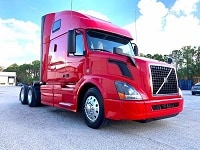
Regional truck driving is when a truck driver will have a route in a distinct area of the country or region. For example, if a truck driver will be driving in the Southeast region of the country, the driver will probably be driving in Georgia, Florida, Alabama, Arkansas and Tennessee. A regional truck driver will have a predetermined run or route that will have the driver to be home once or twice during the week, and usually always home on the weekend.
Read More

 There are four major requirements that is required to pass the CDL vision test according to the
There are four major requirements that is required to pass the CDL vision test according to the